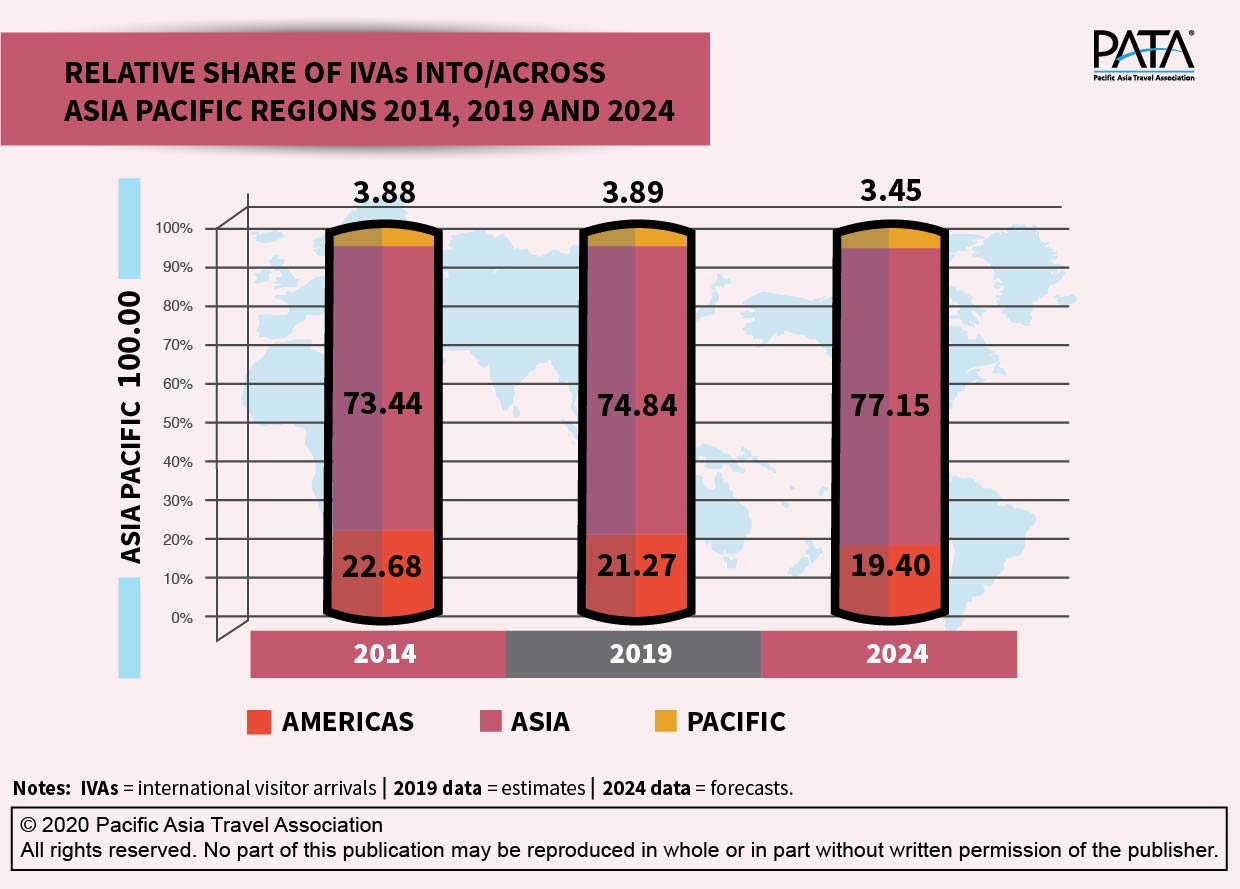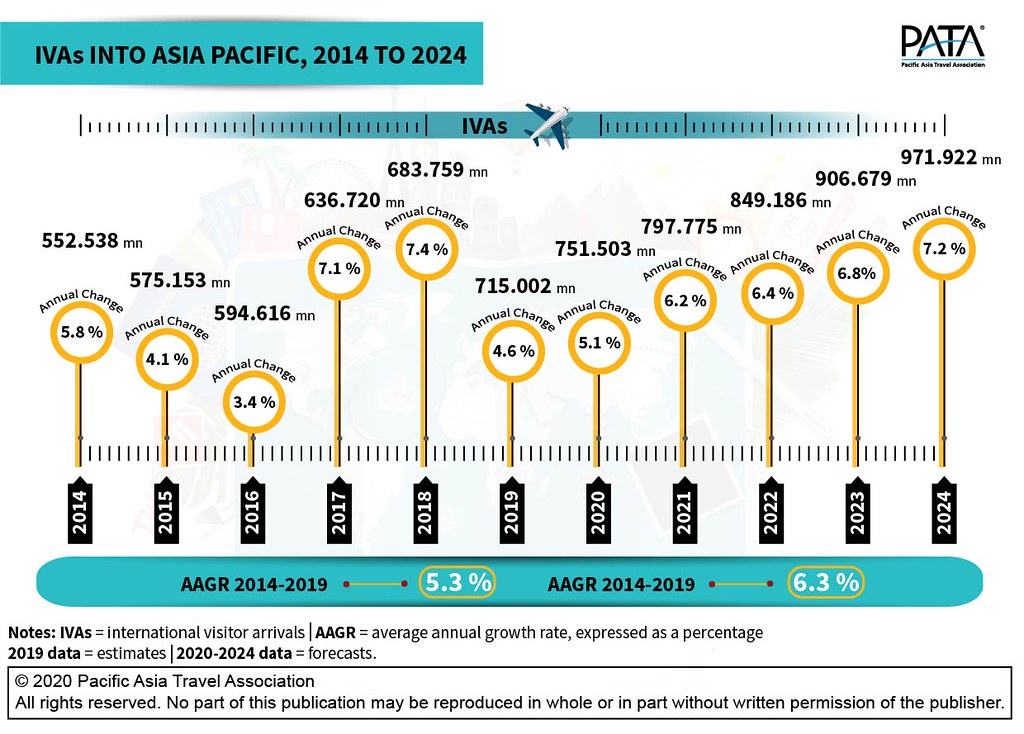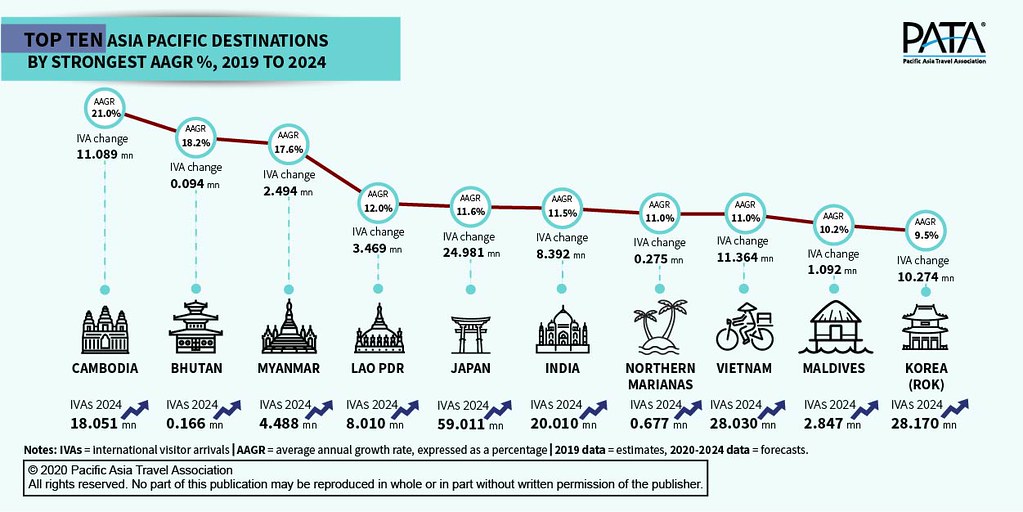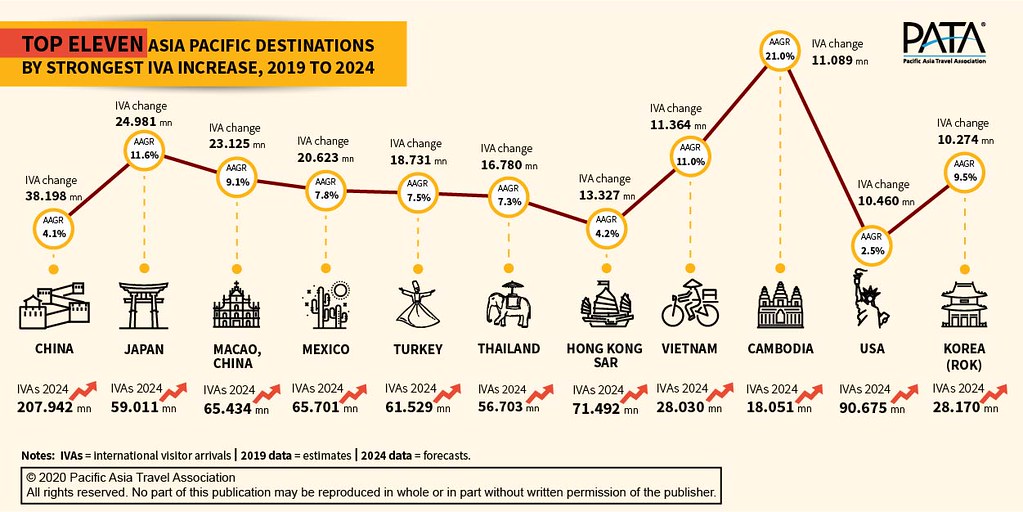ASIA PACIFIC. Asia Pacific could welcome close to one billion international visitor arrivals (IVAs) in 2024, according to new research by the Pacific Asia Travel Association (PATA).
A key takeaway from its Asia Pacific Visitor Forecasts 2020-2024 – which covers 39 destinations within the region – is the prediction of a volume in excess of 971 million IVAs into Asia Pacific during the fifth year of this decade.

PATA said the strong increase in IVAs has been driven by the average annual growth rate (AAGR) in Asia Pacific of +5.3% between 2014 and 2019, and it expects that momentum to increase even further over the next five years, to average +6.3% per annum between 2019 and 2024.

Using PATA’s expected figures, this will result in an increase of more than 256 million additional IVAs into the region between 2019 and 2024. This marks a notable increase over the additional volume of 162 million its research shows was added between 2014 and 2019.

Asia is forecast to remain the dominant destination region within the whole of Asia Pacific and the Americas combined and is likely to improve its relative share to over 77% by 2024, from 74.84% in 2019. The Americas is forecast to hold second place, although PATA said its share is expected to reduce slightly over the period between 2019 and 2024 (a predicted fall from 21.27% to 19.4%).

As a generator of IVAs into and across Asia Pacific however, Asia is predicted to continue growing in relative share, accounting for almost 68% of all IVAs into the region in 2024. PATA said this is likely to be at the expense of both the Americas and Europe, both of which are predicted to see falls in their respective shares.

China will head the list of Asia Pacific destinations by strongest IVA increase over the period 2019 to 2024, according to the PATA predictions. The country is expected to add around 38.2 million more annual arrivals to its inbound count in 2024 compared to 2019, raising its aggregate volume to almost 208 million (an AAGR of +4.1%).
Japan is ranked second by PATA, followed by Macau and then Mexico, with all of these destinations expected to receive more than 20 million additional foreign arrivals each, over the forecast period to 2024.

The top group of 11 destinations is likely to account for 77% of the IVA volume into Asia Pacific in 2024 and more than three-quarters of the additional arrivals over that same period, PATA said.
In addition, PATA predicts that nine out of ten destinations will have average annual growth rates between 2019 and 2024 in excess of +10%, ranging from +10.2% for the Maldives to +21% for Cambodia. PATA notes that the volume bases for each of these destinations vary widely, however “these very strong average rates of growth are certainly worth closely watching” over the forecast period.
The top ten strongest source markets between 2019 and 2024 are forecast by PATA to be China, South Korea and Hong Kong in the top three positions, generating a collective volume of more than 369 million IVAs over that period. These three source markets alone are also predicted to generate an additional volume of more than 106 million IVAs into Asia Pacific over the same duration.
PATA notes that much of that volume is generated by internal Greater China flows. Adjusting for the Greater China source-destination pairs, the importance of China for a number of other Asia Pacific destinations is clear, with China appearing five out of the possible ten times, as a major source market.

Reflecting on the forecasts, Pacific Asia Travel Association CEO Dr. Mario Hardy said: “For many destinations, there is now an immediate and necessary shift from generating arrivals to properly managing those visitors. It is no longer enough to think and talk about this, the time to put into action such management practices that ensure that visitors into and across the Asia Pacific region receive a superlative and memorable experience is now.
“The tourism juggernaut is a reality, and this means that, as a socio-economic sector, travel and tourism needs to ensure that it has the necessary mind set and infrastructure – both hard and soft – to enable growth of this magnitude to be properly managed. It is incumbent upon us all to deliver both memorable experiences and positive outcomes for visitors, residents and the environment in equal measure.”













